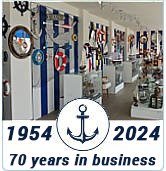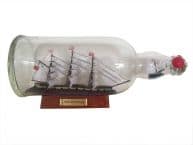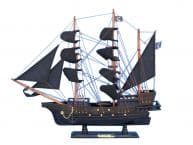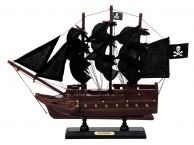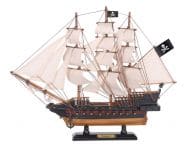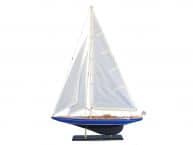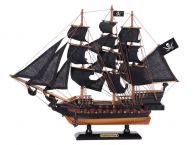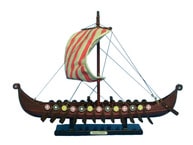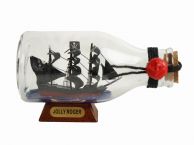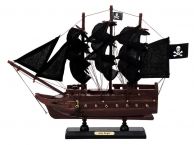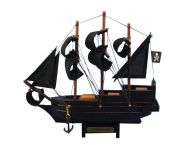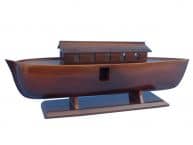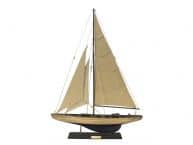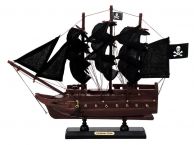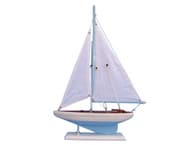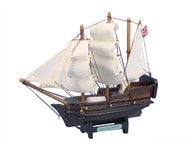|
|
Customers Also Shopped

|
|

|
Wooden Blackbeard's Queen Anne's Revenge Black Sails Limited Model Pirate Ship 26"
Prior to the Legend:
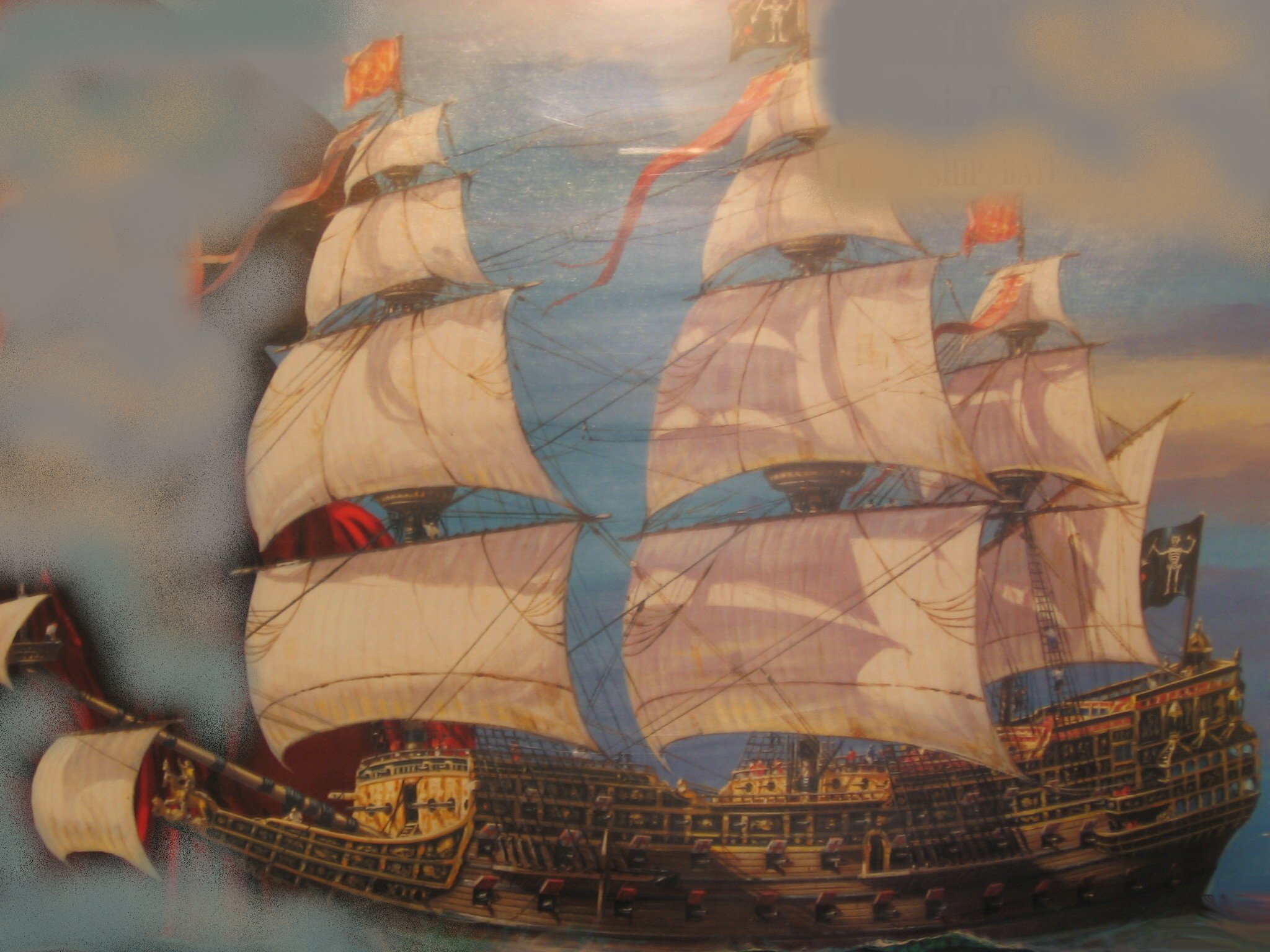
Built in 1710, the Concord enjoyed a brief life as an English ship before being captured by French forces in 1711. Constructed as a frigate, the ship was modified by the French to hold cargo, and slaves in particular, as at that time the slave trade was a burgeoning business in western France. Coming into the possession of French merchant Rene Montaudoin, La Concorde was operated out of the port of Nantes, the epicenter of the French slave trade during the 18th century. Making three runs over the course of the next decade, La Concorde would depart from Nantes with various French goods and wares, sail to the west coast of Africa to trade for slaves, and from there continue along the trans-Atlantic Middle Passage to the islands of the Caribbean.
While slave trading voyages were successful in 1713 and again in 1715, the 1717 journey would be the last for La Concorde. Leaving Nantes on November 24, 1717, armed with 16 cannons and a crew of 75, La Concorde departed for the African coast. On July 8 she arrived in the port of Judas, now Benin, Nigeria, and traded for 516 African slaves. Taking eight weeks to travel across the Atlantic, 61 slaves and 16 crew members died as cramped quarters and squalid conditions lead to the spread of scurvy and dysentery. After making it across the Middle Passage, approximately 100 miles out from the Caribbean island of Martinique, La Concorde and the pirate Edward Teach met for the first time. According to one Lieutenant Ernaut, arriving aboard La Concorde, two pirate sloops fired upon the French slave ship, and with the crew severely ill, Captain Dosset surrendered almost immediately. Taken to the Grenadine Islands, the majority of the French crew and African slaves were put to shore while others joined the pirates, gold and other loot was seized from the ships, and Edward Teach sailed from the Grenadines aboard La Concorde.
The Pirate Known as Blackbeard:
Better known as the infamous and legendary Blackbeard, Edward Teach became the quintessential pirate of the Golden Age of Piracy. Born circa 1680, not much is known about Teach’s early life, aside from that he was probably a privateer during Queen Anne’s War. From 1702 to 1713 as France and England battled over control of North America, many privateers joined the cause, especially around Spanish Florida and the Caribbean. As with many of these privateers, it is thought that Teach turned to piracy following the war, using the skills he learned for conquest and plunder in becoming Blackbeard. Moving to New Providence Island, Teach met and fell in with the pirate Captain Benjamin Hornigold, eventually becoming the legendary Blackbeard. 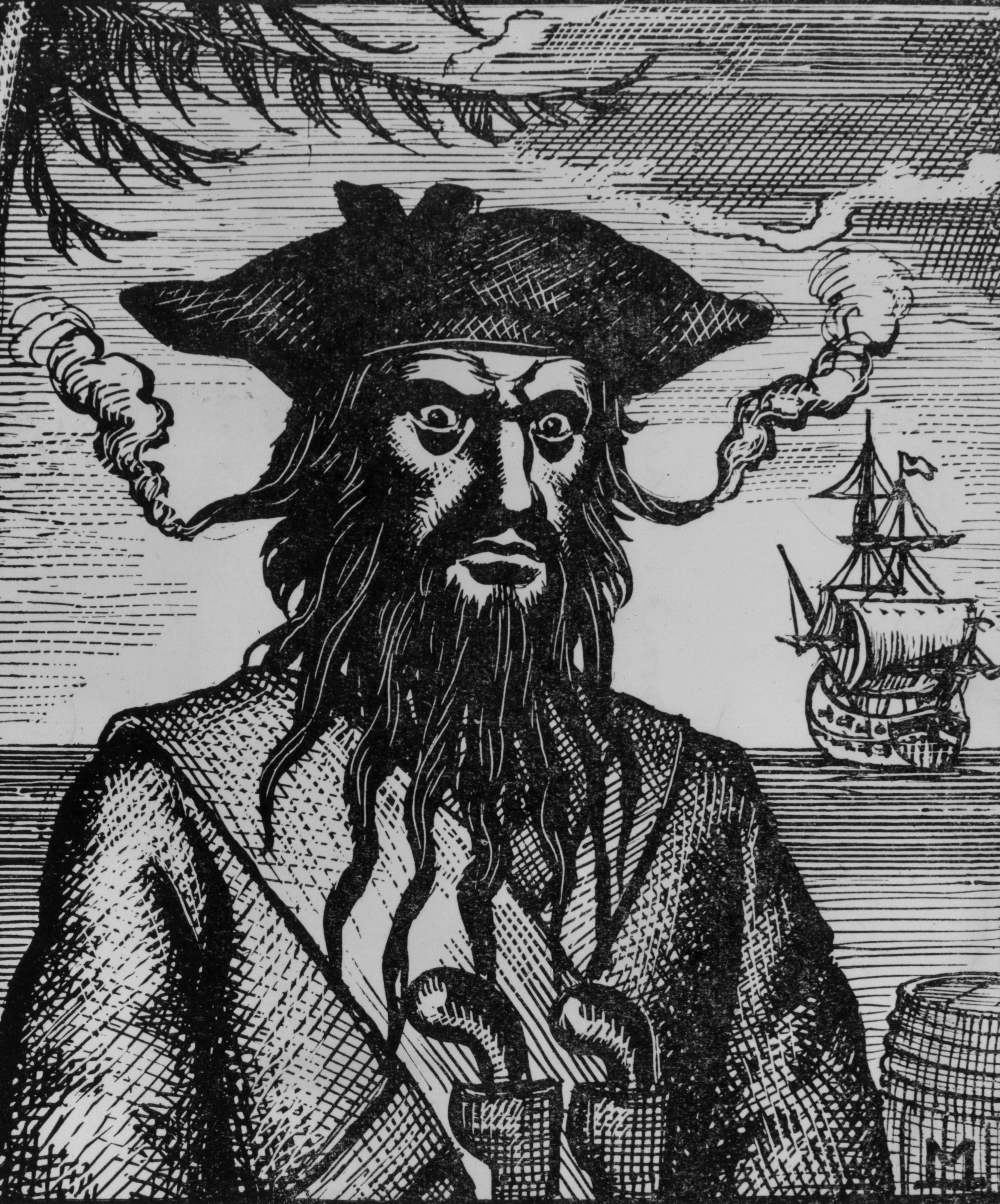
The Queen Anne’s Revenge Rises:
After capturing La Concorde near the island of Martinique , Captain Hornigold turned the ship over to Blackbeard as his flagship, to which he added cannons and his menacing flag, renaming her the Queen Anne’s Revenge. Throughout the next year, sailing throughout the Caribbean, Blackbeard’s legend grew as he became known for his frightening visage of bandolier guns, flowing capes, and lit fuses burning in his beard. Sailing through the Lesser Antilles, past St. Vincent, St. Lucia, and Nevis, Blackbeard continued on to Puerto Rico, and from there to Hispaniola, or present day Dominican Republic. After sinking a French ship off the coast of St. Christopher’s Island, Blackbeard resumed attacks on British, Dutch, and Portuguese merchant and slave ships throughout the area. In March of 1718, off the coast of Belize, Blackbeard and his crew spotted the sloop Adventure, captained by David Harriot, and boarded her. Convincing the captain and several of the crew to join with him, Blackbeard added the ship to his fleet and ventured out for further conquest. Sailing through the Bay of Honduras he collected another large ship and four sloops before capturing a Spanish ship later that year off the coast of Cuba.
Armed with a fleet of three sailing ships and five sloops, and approximately 300 crew, Blackbeard was now a true force to be reckoned with as he sailed from the Bahamas up the east coast North America. In May of 1718 Blackbeard and his pirates arrived along the coast of Charleston, South Carolina where the Queen Anne’s Revenge and three sloops came to blockade the port in what was Blackbeard’s boldest move as a pirate. After capturing the merchant ship Crowley, Blackbeard demanded medicine for his crew from the governor. After a week of raiding ships while awaiting the governor’s supplies, the medicine was delivered and the crew of the Crowley was returned unharmed, though lighter in the pockets, or without clothes at all. Following his victory, Blackbeard attempted to venture up North Carolina’s Old Topsail Inlet, now Beaufort Inlet, where he is rumored to have run the Queen Anne’s Revenge aground purposefully.
Blackbeard and the Queen Anne’s Revenge Meet Their Fate:
Though the true reason may never be known, what is known is that the Queen Anne’s Revenge ran aground on a sandbar, snapped her main mast and severely damaged her hull timbers, and eventually sank with little fan fair. After selecting a crew of his most trusted sailors and gathering the best of the bounty, Blackbeard escaped aboard the Adventure, leaving the Queen Anne’s Revenge to her fate. In June 1718 Blackbeard and his crew were pardoned by a blanket British Royal order, granting all pirates who surrendered before September 5, 1718, full amnesty. Though he surrendered after this date, regional governors were allowed to extend the pardon. In the next six months Edward Teach supposedly settled down and married, though eventually the sea’s call was too strong and he took up piracy as Blackbeard yet again. In November of 1718 word spread that Blackbeard and company were in Ocracoke Inlet, North Carolina, and Governor of Virginia Alexander Spotswood financed an operation to seize the pirate and his crew. On November 21 Lieutenant Maynard discovered the pirates on Okracoke Island, and the next day engaged in a battle in which Blackbeard and much of his crew were killed. Returning to the Governor, Lieutenant Maynard placed Blackbeard’s head on the bowsprit of his ship, a frightening end to a legendary pirate.
Though Blackbeard’s body was never recovered, in 1996 the wreckage of the Queen Anne’s Revenge was discovered off the coast of North Carolina’s Fort Macon State Park. Over 16,000 artifacts have been recovered, including several cannons, and in 2000 and 2001 live underwater video was used for educational purposes. In 2006 more artifacts were discovered at the wreck, and by the end of 2007 almost a third of the ship had been explored. Though there was some controversy as to whether or not the wreckage was in fact the Queen Anne’s Revenge, in 2011 it was confirmed, bringing the history and legacy of both the ship and her captain back to the forefront of popular culture. Used as inspiration throughout the last three centuries for everything from classic pirate stories to modern day cinematic masterpieces, both Blackbeard and the Queen Anne’s Revenge are now legends that will live on forever.
 Handcrafted
Handcrafted Handcrafted
Handcrafted Handcrafted
Handcrafted Handcrafted
Handcrafted Handcrafted
Handcrafted Handcrafted Model Ships
Handcrafted Model Ships



